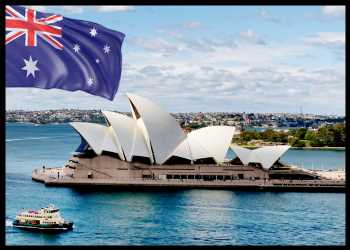Australia Inflation Slows Further In Q2
Australia’s inflation slowed for the second straight time in the June quarter, easing the pressure on the Reserve Bank to tighten its policy urgently at the next meeting.
Consumer price inflation slowed more than expected to 6.0 percent in the second quarter from 7.0 percent in the previous quarter, data from the Australian Bureau of Statistics showed Wednesday. The expected rate was 6.2 percent.
“This marks the second consecutive quarter of lower annual inflation, also known as ‘disinflation,’ from the peak of 7.8 percent in the December 2022 quarter,” Michelle Marquardt, ABS head of prices statistics, said.
Trimmed mean annual inflation of 5.9 percent was also lower in the June quarter compared to 6.6 percent in the March quarter.
New dwelling prices continued to ease in the June quarter, down to 7.8 percent. The moderation in price growth reflects lower new demand, improvements in the supply of materials and material costs easing.
Rental prices were up 6.7 percent, which was the biggest increase since 2009, reflecting low vacancy rates amid a tight rental market.
Services annual inflation of 6.3 percent was the largest since 2001, driven by higher prices in a range of services categories. At the same time, goods inflation slowed to 5.8 percent from 7.6 percent.
On a quarterly basis, consumer prices rose at a slower pace of 0.8 percent after posting 1.4 percent increase. A similar pace of slow inflation was last reported in the third quarter of 2021.
“While prices continued to rise for most goods and services, there were some offsetting price falls this quarter including for domestic holiday travel and accommodation and automotive fuel,” Marquardt said.
In June alone, consumer prices registered an annual increase of 5.4 percent, as expected but weaker than May’s 5.5 percent rise. The slowdown was largely driven by the 10.6 percent fall in automotive fuel prices.
Another fall in inflation should be enough to keep the central bank on hold at their next meeting, but the helping hand from base effects will grind to a halt after next month, which could set the stage for a further hike in September, ING economist Robert Carnell said.
The Reserve Bank of Australia has raised its benchmark rate by 4 percentage points since May last year. The board next meets on August 1.
Source: Read Full Article

